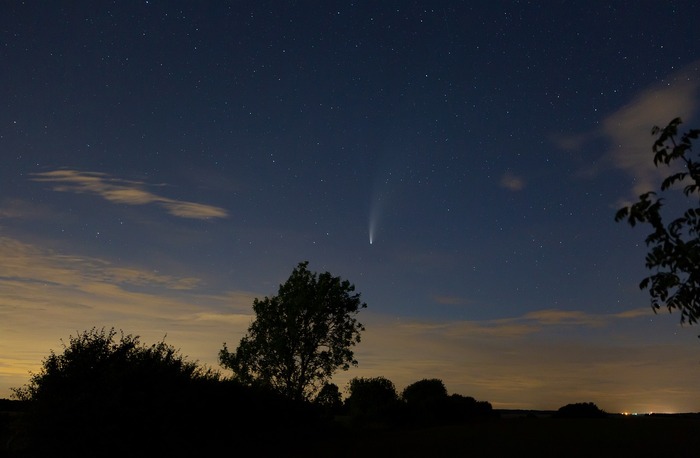The Neanderthal comet C/2022 E2 ZTF visits the Sun: on Thursday 12 January it will reach perihelion, i.e. the point of minimum distance, equal to 166 million kilometres.
Its nucleus should survive the close encounter with the star without disintegrating, and then set course for the Earth which will say goodbye on February 1st, probably making itself visible to the naked eye.
Between late January and early February it will return to visit the Earth after its last passage took place in the time of the Neanderthals, about 52,000 years ago.
The experts of the National Institute of Astrophysics explain it on MediaInaf.
On February 12, comet Ztf will pass at "a fairly high distance" from the Sun, "therefore the nucleus should survive the sublimation activity without problems and not disintegrate as happened to other comets that got much closer." , for example the Ison (C/2012 S1) in 2013. From 17 January 2023 - the experts continue - the declination of the Ztf will be so high that it will become circumpolar for the Italian latitudes, therefore it will always be visible in the sky during the night and will remain so until February 5".
Currently the comet shows itself to the telescopes with a green coma, an intense yellowish dust tail and a thin bluish ion tail.
The latest observations indicate that the brightness is increasing as expected and that the comet will be above the threshold of naked eye visibility between January 20 and February 10, with the maximum brightness on February 1 coinciding with the minimum distance from the Earth.
To admire the show it will be useful to have "at least a small 8ž30 or 10ž50 binoculars, the typical ones for naturalistic excursions".
On the occasion of the passage of Ztf, EduInaf will organize a live broadcast on the evening of January 30 in which the comet taken with the Asiago telescopes and the Tng will also be shown.
Furthermore, EduInaf is launching the campaign 'A comet among the stars in winter', together with the Italian Amateur Astronomers' Union (Uai).
To take part, it will be enough to photograph the Ztf comet with one's own telescope/telephoto lens and send the images to EduInaf, also via the dedicated Flickr group.
Revealing the secrets for correct observation is the astrophysicist Gianluca Masi, head of the Virtual Telescope Project, who will organize two observing sessions on January 13 and February 2: the live broadcast will also be broadcast by ANSA's Science and Technology Channel.
"The comet is expected to just pass the threshold of unaided eye visibility when it is closest to Earth (about 42.5 million km) on February 1 at 6:11 p.m., making it barely observable without instruments under truly dark, clear and starry", explains Masi.
“This means that it will certainly not be as spectacular as the C/2020 F3 Neowise from summer 2020 and therefore will require at least binoculars to be appreciated.”
On the other hand, at Italian latitudes, in the days of maximum splendor between the end of January and the beginning of February, the comet will be circumpolar, i.e. visible all night above the horizon.
The real limit is represented by the interference of the Moon, which will be particularly intrusive in the key evenings.

